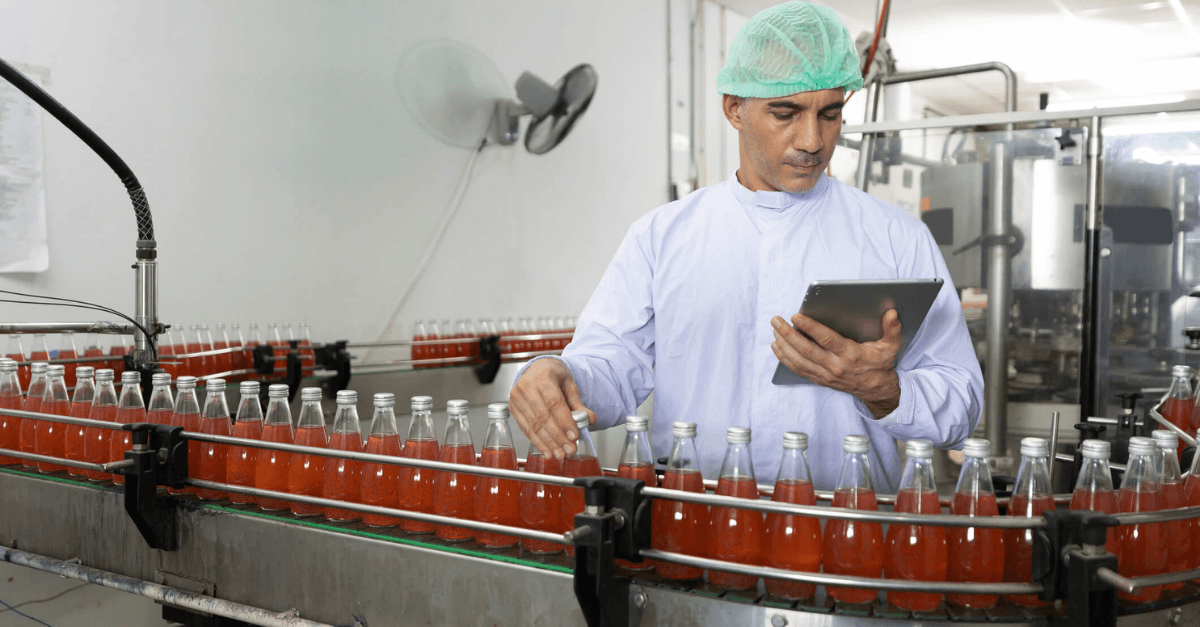Using lean manufacturing principles in your food manufacturing production isn’t just about implementing a new program. Although there are a number of specific projects and steps within implementation, lean manufacturing isn’t something you set once and watch it work forever.
Instead, it’s all about continuous improvement to eliminate waste, which means reducing actions or costs that don’t bring customer value. Using lean manufacturing is the most effective way to reduce production costs in manufacturing—but to get the best results, you’ll also need a digital factory that uses manufacturing analytics software.
To start reducing waste to lower production costs, managers can focus on:
- Machine Availability: Get a realistic view of uptime and downtime.
- Process Efficiency: Identify what processes are causing waste.
- Employee Training: Invest in training to improve all processes.
Analyzing Availability to Find Productivity Loss
Overall equipment effectiveness (OEE) is based on availability, performance, and quality. Availability is all about downtime loss, which occurs when you lose productivity because of stops in production, often caused by equipment failures, changeovers, and material shortages. Some of this downtime, such as changeovers, is planned. However, if the planned changeover time lasts longer than it should, it could seriously cut into production time, which impacts costs.
It is impossible to avoid changeover time altogether, but it is possible to improve changeover time when it is cutting into production and increasing costs instead of reducing them. An OEE score over 85 percent is world class. If your OEE score is lower and you are not hitting your targets, look at factors such as changeover time, and see if they are causing unplanned downtime.
To get an accurate look of your factory’s availability, managers need reliable data and analytics software. Worximity can help you benchmark your OEE so you can set improvement goals.
Use Data to Improve Production Efficiency and Eliminate Waste
There are several types of production waste that keep factories from operating at maximum efficiency. Lean manufacturing recognizes eight types of waste:
- Defects waste is pretty self-explanatory: defective products that are unsellable or need valorization.
- Overproduction waste is energy wasted producing excess inventory.
- Waiting waste comes from unexpected downtime that requires on-the-clock workers to wait before they can do their job.
- Non-utilization waste is when workers either are unproductive or don’t have the right skills.
- Transport waste happens when there’s unnecessary transportation and relocation.
- Inventory waste is when a factory produces more than they need, anticipating future sales. (Just in Time [JIT] production can help with inventory waste.)
- Motion waste is when machines or workers repeat motions or actions that don’t add value.
- Excess processing waste is inefficient steps you don’t need—they don’t add any value.
To get an accurate view of how much waste your factory is facing, you need the right data. Worximity’s Smart Factory analytics can help you identify types of waste and provide you with the information you need to improve processes to be more efficient.
If you have any factory processes that are still manual, you likely have waste you can’t clearly identify because you don’t have the benefits of a digital factory. For example, connecting your lines can really help you collect the most accurate, useful data so you can eliminate waste and drive new efficiencies.
Reduce Production Costs in Manufacturing Using Effective Training
You can’t go wrong investing in employee training. Employees who are well-trained for their jobs are more confident and make fewer errors. Unfortunately, it can be easy to overlook training gaps. If you’re still using manual processes in your factory, it can be extremely difficult to identify the nuances of worker behavior that lead to unmet expectations, or worse—an incident that causes an injury on the job because someone didn’t know exactly what they were supposed to be doing.
For example, let’s look at changeovers again. We know that there’s no way to eliminate changeover time, but one poorly trained worker can take your changeover time from planned to unplanned downtime.
The right level of monitoring can give factory managers comprehensive data on employee performance using on-line performance monitoring systems. With that data, you can implement lean manufacturing principles to build a culture of change that better encourages participation in training. Lean is not just a program; it’s a culture. Leveraging lean principles to improve the culture surrounding employee training can make a huge impact on your plant’s availability and efficiency.
See How Analytics Software Can Help Reduce Production Costs in Manufacturing
Get a better idea of how well your factory is operating, from machines to employees on the floor. Worximity’s Smart Factory analytics software provides food manufacturers with monitoring sensors for production machines, workstations, and any other device or line process that need to be measured. You’ll get real-time results calculated and shown on factory-floor dashboards or TileBoards.
See for yourself how you can get the data you need to reach your business goals. Request a Smart Factory analytics demo now.







